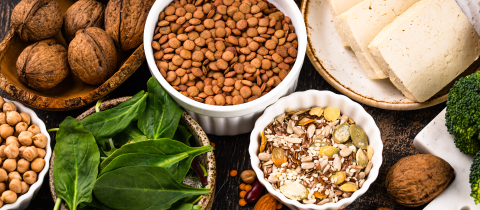The soy sauce into which you dip your egg roll or use in your meat marinade may just be the world’s oldest produced condiment, dating back at least 2,500 years. The original Chinese method of production involves fermenting a mixture of soybeans, salt and wheat with a mold from the Aspergillus family, either Aspergillus oryzae or Aspergillus soyae. These molds produce enzymes that break down the proteins, fats and carbohydrates in soybeans into simpler, flavourful compounds. Some of these are amino acids, including glutamic acid, which in the form of its salt, monosodium glutamate (MSG), is a widely used flavour enhancer. Glutamates have a distinct taste, which goes under its Japanese name umami.
The mold enzymes do not break all the soy proteins down to individual amino acids. Some of the products are peptides, or small chains of amino acids that make a subtle contribution to taste. Salt-tolerant yeasts and lactic acid–producing bacteria are subsequently added to the fermenting mixture to bring out even more flavour by converting some of the mold products into various aldehydes, esters, furanones and pyrazines that attenuate the flavour. As an added bonus, fermentation produces a number of antioxidants. Indeed, real soy sauce is far richer in antioxidants than red wine. However, anyone hoping to reduce menopausal symptoms with soy sauce will be disappointed, because unlike other soy products, the sauce does not contain estrogenic isoflavones.
It takes weeks, or even months, to produce traditional soy sauce. A cheaper, “artificial” version can be produced in a day simply by adding hydrochloric acid to a defatted mash of soybeans, then neutralizing with sodium carbonate. But this is a brutal method that breaks proteins down to individual amino acids with the resulting flavour and aroma being quite different. Undesirable compounds such as dimethyl sulphide and formic acid are also produced. Absent, though, is the brown colour produced by fermentation products, a problem solved by the addition of caramel colouring. Sometimes, the artificial sauce is blended with some fermented sauce to produce a more acceptable product.
There is a bigger issue with the “chemical” soy sauce than just the muddled flavour. Hydrochloric acid hydrolyzes some residual fat in the soybeans into fatty acids and glycerol. The glycerol in turn reacts with the acid to form compounds called chloropropanols, with 3-chloro-1,2-propanediol (3-MCPD) and 1,3-dichloropropan-2-ol (1,3-DCP) being examples. And here is the glitch. These chloropropanols are suspected of having anti-fertility effects, of being carcinogens, and furthermore, 1,3-DCP is suspected of causing genetic damage that can be passed on to offspring. Some soy sauces produced by the acid method imported from Asian countries have been found to contain thousands of times more chloropropanols than is permitted.
How can you tell if your soy sauce is authentic? Look for the terms “brewed” or “fermented” on the label and the absence of corn syrup, hydrolyzed soy protein and caramel. As far as chloropropanols are concerned, most North Americans do not consume enough soy sauce for these to be a problem, but keep in mind that all soy sauce, authentic or artificial, is high in salt.







